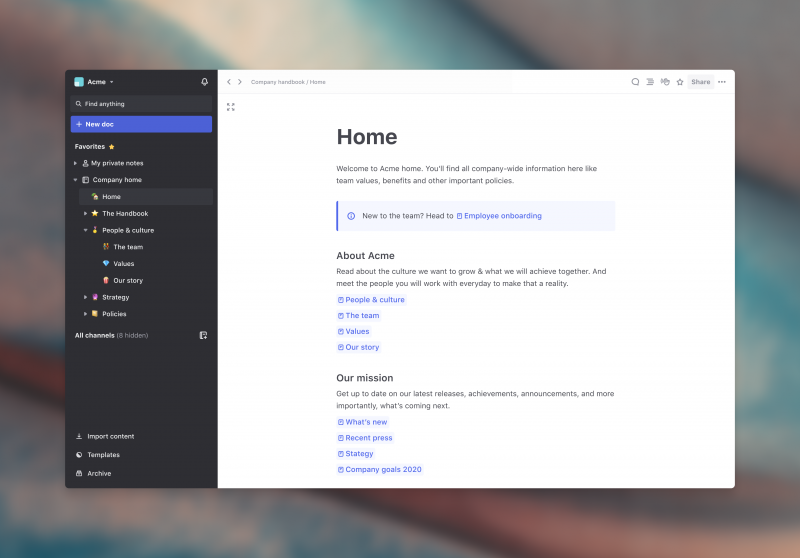Slite announced that it has raised an $11 million round of venture capital as the company prepares to ramp up promotion of its workplace collaboration platform. Spark Capital led the round of funding. Slite has now raised more than $15 million, including its previous round of $4.4 million in 2018.
Founded in 2016, Slite’s growth is testament to people’s desire for better workplace collaboration tools even after more than two decades of attempts to satisfy that hunger by a host of startups and tech giants. That need has grown as more teams work remotely, a trend that has accelerated during the coronavirus lockdowns.
The company believes its advantage is that it was designed for teams sharing documents from the ground up.
“Slite has always been built in mind for simplicity,” said Slite CEO Christophe Pasquier.
June 5th: The AI Audit in NYC
Join us next week in NYC to engage with top executive leaders, delving into strategies for auditing AI models to ensure fairness, optimal performance, and ethical compliance across diverse organizations. Secure your attendance for this exclusive invite-only event.
At the start, the founders looked at tools like Google Docs, Evernote, and Microsoft Word and believed they were great for individual users but too unwieldy for teams. Keeping all the information, changes, and projects centralized in a way that all team members could participate and follow changes proved messy.
Slight wanted to create an easier and more transparent workflow. The interface looks not unlike Slack, except rather than focusing on messaging, it puts documents at the center.
Pasquier said users find the folder structure easier to navigate. And the editing and commenting tools are fairly intuitive, he said. The platform can also be integrated into other collaboration tools such as Slack, GitHub, Asana, and Trello.
The team built the first version of Slite with just 6 months of coding. Pasquier said while that helped them attract the first few thousand customers by word of mouth, in retrospect he’s amazed the product got so much traction in such a basic form. That hasn’t stopped the company from signing up more than 4,000 customers, including Airbnb, Spotify, and WeTransfer.
Over the past year, the 20-person team has been improving the document editor while adding tables, comments, and a mobile app, along with the integrations to other tools. It’s currently working on adding offline features. Still, Pasquier said he feels like the functionality has reached a point where it’s finally a complete first version of the product he originally imagined.
“It’s quite funny to think we managed to grow this fast with this product,” he said. “It’s a category where people have a lot of basic expectations for the product.”
The company still faces plenty of competition, and not just from the tech giants. Atlassian’s Confluence addresses the same document collaboration space, as does Miro.
As it prepares to expand hiring and marketing, the company is also promoting a world view that de-emphasizes the need for meetings. It’s a counterintuitive thought, particularly at a moment where coronavirus lockdowns have people trying to reinvent and replace real-world interactions through tools like video chat.
Pasquier said the Slite team almost never holds meetings, virtual or in real life. Instead, they’ve adopted an asynchronous approach where people focus on writing down information to create more participation and transparency.
“This is something we try to educate our users about to help them work in a more thoughtful way,” he said. “Having fewer meetings can make you more effective. This is something where we think Slite can be a tool that helps drive them toward this way of working.”



